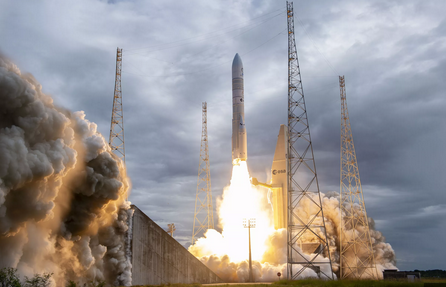Ariane 6 success – and failure
July 10, 2024
By Chris Forrester

The European Space Agency (ESA) successfully launched its much-needed Ariane 6 rocket from Europe’s Spaceport at Kourou in French Guiana on the evening of July 9th. While the launch completed many of the mission’s key tasks, it failed during the later stage of the flight.
ESA was fulsome with praise following the first, second and third payload separations. But then, after about three hours, the mission called for a refiring of the Vinci final stage engine (its auxiliary power unit/APU) and it was at this point that the mission failed. The Vinci engine did not light. Two payloads were not deployed.
Arianespace’s CEO Stéphane Israël said the problem would have “no consequences on the next launches”. Indeed, ESA and Arianespace talked extensively of the mission’s success calling it “an historic achievement for European autonomous access to space”.
The rocket’s final components were then supposed to be de-orbited and re-enter the Earth’s atmosphere and burn up in the process somewhere over the south Pacific. This didn’t happen although the assembled press at the launch site were not informed of the anomaly for some time.
As one observer summed up: “Martin Sion confirmed that the upper stage cannot be deorbited. Considering ESA’s recent focus on its Zero Debris charter, this isn’t a great look. Sion was also surprisingly flippant in his response to how long the stage would remain in orbit.” The non-ESA experts suggest the upper stage will stay in orbit for perhaps 10 years and thus making something of a mockery of ESA’s commitment to keeping space clean and free from debris.
In fairness to ESA this was always a test flight, and on such launches there can be problems. The APU issue will take time to fix, which is annoying, but this was a first launch and there’s always the possibility of something going not quite according to plan.
Israël added that the failure of the APU deorbit burn does not change plans for second mission – and first commercial flight – planned for in December and six Ariane 6 flights in 2025. These apparently do not need the APU function, but satellite constellations, such as Amazon’s Project Kuiper craft, do need APU functionality.
Ariane 6 will have a strong order book from European-only payloads, and international customers who don’t want to fly SpaceX for whatever reason. However, it won’t recapture the dominant position Europe had in the commercial launch market pre-2015. That dominance is now with SpaceX.
